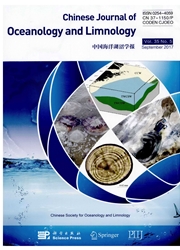

 中文摘要:
中文摘要:
与数据吸收从一个数字模型产生的苏打数据被用来在南方太平洋的变温层学习十的热反常。十的变温层变化的三个著名事件被发现。首先,二个主要温暖的俯冲事件从在 30 ° S 集中的露头区域发源,在南方太平洋的 150 ° W 在向西方的热带并且在 30 ° S 宣传的 1960 年代和 1980 年代之间发生了,在迟了的 1970spropagating 的 90 ° W 直接向东方热带。第二,在 15 ° S 附近从东方边界发源的一个特殊向西温暖的事件发生在 1980 年代初。第三, 10 °S 附近的积极温度异常的不同带的地点转变发生在1970年代末 .The 结果建议在副热带的南方太平洋区域的温暖的事件对在1970年代末前并且到在1970年代末以后的东方热带太平洋的西方的热带太平洋的十的可变性重要。
 英文摘要:
英文摘要:
The SODA data generated from a numerical model with data assimilation axe used to study the decadal thermal anomalies in the thermocline of the South Pacific. Three notable events of decadal thermocline variations are found. First, two major warm subduction events originated from outcrop regions centered at 30°S, 150°W in the South Pacific Ocean occurred between 1960s and 1980s propagating toward the western Tropics and at 30°S, 90°W in the late 1970s propagating directly toward the eastern Tropics. Second, a special westward warm event originating from the eastern boundary around 15°S occurred in the early 1980s. Thirdly, a distinct zonal location transition of the positive temperature anomalies near 10°S took place in the late 1970s. The results suggest that the warm events in the subtropical South Pacific region are important to the decadal variability of the western tropical Pacific before the late 1970s and to the eastern tropical Pacific after the late 1970s.
 同期刊论文项目
同期刊论文项目
 同项目期刊论文
同项目期刊论文
 Evaluation of Monthly Turbulent Heat Fluxes from WHOI analysis and NCEP reanalysis in the Tropical A
Evaluation of Monthly Turbulent Heat Fluxes from WHOI analysis and NCEP reanalysis in the Tropical A The Relationship between Meridional Volume Transport and Sverdrup Transport in the North Subtropical
The Relationship between Meridional Volume Transport and Sverdrup Transport in the North Subtropical Stokes drift–induced and direct wind energy inputs into the Ekman layer within the Antarctic Circump
Stokes drift–induced and direct wind energy inputs into the Ekman layer within the Antarctic Circump 期刊信息
期刊信息
